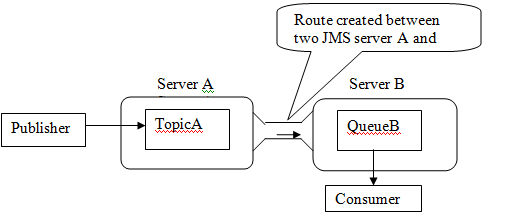

Then in Anypoint Studio, get the MQ connector and create a flow for publishing or consuming messages, and run the Mule Application to ensure your application works and to serve HTTP requests at your localhost. Use this API in conjunction with the following APIs: Anypoint MQ Broker API. AWS S3) and keep a reference ID in the MQ message.
#Tibco gems pattern how to#
How To Create A Delayed Queue And Publish A Message With Delayed delivery Using Anypoint MQ API.
#Tibco gems pattern software#
Compare price, features, and reviews of the software side-by-side to make the best choice for your business. The access token in this section can only be used with the Broker API. Anypoint MQ supports a wide range of messaging use cases, such as enterprise messaging patterns, asynchronous The sample also comes with exhaustive admin functions which provides the below functions using the Anypoint Platform APIs to automate new subscriber onboarding: Publish/subscribe is the mechanism by which subscribers can receive information, in the form of messages, from publishers.


Publish Message TO Anypoint MQ In this tutorial we will demonstrate how can we publish the message to Anypoint MQ The Anypoint MQ connector provides publish-subscribe messaging to Mule apps using the Anypoint MQ cloud service.

Anypoint MQ Publish Operation - Mule 4 The Publish operation enables you to create a new Anypoint MQ message and send it to the specified destination: queue, FIFO queue, or message exchange. I need to implement a feature in Anypoint MQ where I publish a message on one AnypointMQ channel and it can then delivered to many other AnypointMQ channels.
#Tibco gems pattern install#
It explains the download and installation steps in detail Install Mulesoft Anypoint Step 2: Publish Your API to Anypoint Exchange. Input Project Name: mule-synchronous-jms-example, Runtime is by default selected, tick on Use Maven here the artifactId is automatically picked up from the Project Name:, the Group Id is picked up from the Default groupId for new projects and version is also a default value Anypoint MQ Anypoint MQ Configure Anypoint MQ In Mule. The screenshot shows ( 1) the Message Browser option and ( 2) the Get Messages button. If you need a messaging source on-premises, you can use Apache Active MQ instead. The Publish operation enables you to create a new Anypoint MQ message and send it to the specified destination: queue, FIFO queue, or message exchange. We checked several solutions, each has its advantages and disadvantages, which you will learn about in this article. Let’s start with key steps as required to communicate with Anypoint MQ queue: Register client applications with Anypoint MQ. Before using the Anypoint MQ Stats API, you should be familiar with the following: Anypoint MQ concepts- Describes queues, message exchanges, and clients. You will be presented with a popup window to capture the attributes that you want to publish to Exchange. Pub Sub Model Publish–Subscribe is a messaging pattern where senders of messages (Publishers) do not program the messages to be sent directly to specific receivers Step 1: Configure Anypoint MQ To get started, let’s configure Anypoint MQ and the underlying Queues or Destinations we’ll use to construct our publish and messaging pattern. Store the complete payload in an external storage (i. Navigate to Anypoint MQ using the menu on the left hand side of the page. Publish to topic or queue (direct or persistent) Ack to acknowledge messages anywhere in the Flow PubSub+ Event Portal integration import events and event schemas. Typically you would Step 1: Configure Anypoint MQ To get started, let’s configure Anypoint MQ and the underlying Queues or Destinations we’ll use to construct our publish and messaging pattern. Compare features, ratings, user reviews, pricing, and more from Anypoint MQ competitors and alternatives in order to make an informed decision for your business.


 0 kommentar(er)
0 kommentar(er)
